Introduction
![Scary Ice Flutings on Pucajirca]() Scary ice flutings on Pucajirca
Scary ice flutings on Pucajirca
One year after making a sixteen-day trek through the
Cordillera Huayhuash (see our trip report with lots of pictures
here), I found myself back in Peru for another climbing adventure. Our plans for this year were ambitious for us, as we hoped to climb up to six summits and ascend to nearly 21,000 feet above sea level. I am particularly fortunate on two counts in being able to attempt such a trip: (1) I have a wonderful wife (Sonya) with whom I love to travel and share adventures, and (2) my wonderful wife apparently has very poor long term memory with regard to the amount of suffering endured during a lengthy trip in the high mountains. After sixteen days without a shower last year, I was lucky even to get Sonya to set a foot back in Peru! This year we were also fortunate to be joined by some of my friends from college, Derek Dalton and his wife Maggie, who were traveling through South America before starting new jobs back home.
In an attempt to make this trip as palatable as possible to those who operate better after a nice hot shower, we decided to break our trip up into four shorter sections in the mountains, with trips back to Huaraz in between for a few days’ rest and recovery. The plan was to acclimatize on short hikes around Huaraz for a few days before attempting Vallunaraju (5686 m), our first high peak. We would then move to the beautiful Ishinca Valley for attempts on Ishinca (5530 m) and Tocllaraju (6032 m), which would be my first technical 6000-meter peak. Then, being well acclimatized, we would travel to the Llanganuco Valley to climb Pisco (5752 m), with its renowned summit view, and attempt the massive pyramid of Chopicalqui (6354 m), which would likely be our greatest challenge. At this point our group would split up, with Derek and Maggie moving on to Cuzco, Sonya escaping the mountains for the friendly confines of work back home. I would then head off to visit the Col Camp below the beautiful Alpamayo to finish off the trip. Oscar and Benjamin, our guide and cook with whom we became good friends during our trek through the Huayhuash, would again join us on our trip this year. Additionally, Carlos (another guide from Huaraz) and Marco (an aspirant guide) would accompany us on some of the climbs. I really enjoy climbing with the guides of Huaraz, as it is an opportunity to make some good friends and climb peaks that might be more difficult than we would otherwise attempt on our own.
Acclimitization Unpleasantness
![Vallunaraju, Oschapalca, Ranrapalca]() Acclimatizing in the Cordillera Negra
Acclimatizing in the Cordillera NegraOnly hours after our arrival in Huaraz, sleep-deprived and rather stunned to have been redeposited amongst the general chaos of Peru, we found ourselves on a lengthy day hike above the pre-Inca ruins of Wilcahuain. Although we could have used some rest after the long flights from Colorado, we certainly needed the acclimatization more, as we planned to be above 18,000 feet on Vallanaraju in just four days. The following day we continued our acclimatization process with a fantastic hike in the dry Cordillera Negra, with stunning views across the valley to the heavily glaciated peaks of the Cordillera Blanca. At this point we were all feeling pretty good, moderately well acclimatized, and ready to tackle some higher peaks!
![Sunset on Ranrapalca]() Ready to get to the big peaks like this one!
Ready to get to the big peaks like this one!
The following day we took a trip to the small glacier below Nevado Pastoruri, a frequently visited spot on the tourist track that is very popular with visitors from Lima. What was meant to be an easy day acclimatizing up to about 5200 meters turned out to be the first day one of us (me this time!) would experience one of the diverse unpleasant maladies that can accompany trips to Peru. After about a kilometer of easy walking, not even getting my breathing or heart rate up, I stopped to take a couple of pictures and noticed I felt a little queasy. Not more than thirty seconds later I was doubled up on the ground, struck down by the altitude.
The rest of the group set off for the glacier without me, as I planned to take it easy resting and wait for them to return. However, instead of feeling better with rest, I just felt more and more nauseous and decided I needed to descend. Our careful preparations back home, running, swimming, climbing the high peaks around the front range, and even camping out on the summit of Mt. Bierstadt (a fourteener) hadn’t adequately prepared me for this altitude, only a few thousand feet higher! What made it seem particularly unfair was watching the groups of middle-aged women from Lima paying to get carried (actually carried, piggy-back!) up to the glacier by porters. I was very nervous as to how the rest of the trip would go for me, as I’d never experienced such a sudden onset of altitude sickness before. I waited down by the parking lot for everyone to return for about two hours, drinking some coca tea and trying not to vomit. When the group finally got back, we started the long drive back to Huaraz, and I started to feel better after only about 15 minutes descending in the van. By the time we got back to Huaraz, all I felt was the normal nausea from the bumpy roads and diesel exhaust of the trip back.
Vallunaraju: The First Summit
![Enormous Avalanche on Ranrapalca]() Enormous avalanche on Ranrapalca
Enormous avalanche on RanrapalcaThe next day we again packed into a van for the trip to the Quebrada Llaca and our hike up to Vallunaraju moraine camp. The peak’s prominent double-horned summit is easily visible from Huaraz, but the drive along the rough dirt roads is seemingly endless nonetheless. I was really nervous how my body would respond to a night trying to sleep at the 4900 meter moraine camp, as it had so thoroughly objected to an easy walk at the same altitude the day before. I walked the hike up the steep slopes out of the Llaca valley at an almost excruciatingly slow pace, forcing myself to pause a few seconds between each step. The trip upwards was uneventful, with the exception of the enormous avalanche (the biggest I have ever seen, by far) that thundered down the southwest face of neighboring Ranrapalca. Three hours after leaving the road we reached the moraine camp, on some rocky slabs about fifteen minutes below the glacier. We enjoyed a beautiful sunset, and then got in our sleeping bags early to get some sleep before our 2 a.m. wakeup.
Unfortunately, we would have to wait for sleep, because about half an hour after going to bed I heard Sonya making some sad-sounding whimpering noises. My poor, brave wife was now the one suffering from the altitude! I was very worried, as descent wasn’t a very good option at this time, so we decided she wouldn’t ascend and would try to rest with the help of some magical soroche (altitude sickness) pills. We were worried that these might possibly mask more serious symptoms, so we decided if she started to feel worse she could descend with our friend and cook Benjamin. But Sonya fell fast asleep about fifteen minutes after taking the medication, and seemed to be doing much better.
![Climbing to the Summit on Vallunaraju]() Oscar climbing to the summit
Oscar climbing to the summitDerek, Maggie and I started off with Oscar and Carlos at around 2:30 a.m. after a quick breakfast of crackers and tea. Maggie wasn’t feeling 100% at this point, but decided to continue on and see how she felt. The moon was bright, and the snow on the glacier sparkled like a galaxy of stars under our headlamps. Travel was easy along the glacier during the night, as we weaved around numerous crevasses in the dark. We reached the tiny col between the two summits just as dawn arrived, and at this point both Derek and Maggie seemed to be feeling quite unwell. For some reason, at this point I was feeling fine at an altitude of over 5600 meters, even though I had felt so bad 600 meters lower just 36 hours previously. The effects of altitude seem to be quite random and unpredictable as to who they strike, and when. Oscar and I climbed the exciting two pitches of steep and exposed snow up the final ridge to the summit, and were joined twenty minutes later by Derek and Maggie. The view from the summit was spectacular: among the sea of peaks we could see two of our future objectives (Tocllaraju and Chopicalqui), as well as the towering Huascaran and the formidable Huantsan, considered the most difficult 6000 meter peak in the Cordillera Blanca.
On the descent he going was easy on the softening snow after the initial downclimb, and we made it back to the moraine camp in no time. On the way down we passed several ill-equipped groups who were off to a VERY late start and moving quite slowly, and we were happy that we were not still ascending as the day heated up. Once back to the tents we packed up camp, enjoyed some soup, and started the steep and loose descent back down to the Llaca valley below. Sonya was feeling much better, and we were excited to relax during our first rest day in Huaraz.
![On the Glacier, Vallunaraju]() Vallulnaraju's lower slopes Vallulnaraju's lower slopes | ![Crevasse and Low Summit of Vallunaraju]() Lower Summit of Vallunaraju Lower Summit of Vallunaraju | ![Descending from Vallunaraju]() Descending Vallunaraju Descending Vallunaraju |
|---|
Ishinca: Further Unpleasantness
![Alpenglow on Tocllaraju]() Alpenglow on Tocllaraju, from Ishinca Valley basecamp
Alpenglow on Tocllaraju, from Ishinca Valley basecampAfter showers and food (including a fine lunch of guinea pig and ceviche at Oscar’s house), we were all feeling energized for our trip to the stunning Quebrada Ishinca. Seeing a sunset on the meringue glacier slopes of Nevado Tocllaraju at the head of the Ishinca valley was one of the primary reasons I wanted to return to Peru, and after the hot hike up the valley we were rewarded for our efforts with a spectacular vista. Tocllaraju was spectacular in the evening alpenglow, but we would have to wait to approach its beautiful slopes as an ascent of Ishinca was planned for the next day. Another early 1 a.m. start was planned, and after a few short hours sleep we left the busy base camp.
We hiked up out of the valley I in the dark on reasonable switchbacks (as opposed to the direct scree and packed dirt slopes on nearly every other approach). After a couple of hours hiking in the dark my backpack started feeling exceptionally heavy, and I asked my wife if we could slow down the pace a bit. Sonya looked at me as if I were crazy, as these are not words I normally use.
Two minutes later I dashed off the trail to find a nice private rock – I was suffering from yet another of the wondrous torments that befall climbers in the Andes. Again I descended while the others continued on, and I spent a lovely quality day moving between my tent (where I would rock back and forth trying not to throw up for a few hours) and the unpleasantly odiferous outhouse. The others managed to summit Ishinca in a long slog of a day on the glacier and the never-ending talus on the moraine, and we reunited in camp. That evening I was administered just about every cure you could imagine, ranging from a traditional herbal tea remedy (courtesy of Benjamin) to around five homeopathic cures (courtesy of Derek and Maggie) to some high quality Peruvian off-brand antibiotics (courtesy of me). Luckily the next day (a rest day) I was feeling better, if still a little shaky.
Tocllaraju: Success on a Beautiful Peak
![Tocllaraju Panorama]() Panorama from Tocllaraju moraine camp
Panorama from Tocllaraju moraine camp![West Face of Tocllaraju]() Tocllaraju West Face
Tocllaraju West Face
The rest day passed and we soon found ourselves ascending the steep slopes out of the Ishinca valley towards Tocllaraju moraine camp. I was again moving slowly due to my most recent bout of illness, but we made it to the stunning moraine camp without incident. The moraine camp lies above the cascading glacier immediately below the broad south ridge, with a panoramic view stretching out across the face of Palcaraju and across the valley to Ranrapalca (dwarfing Ishinca) and Ocshapalca. This was undoubtedly one of the most stunning camps I have ever visited. Maggie and Sonya had both decided to take a mental health holiday after the toil on Ishinca, and would not be climbing Tocllaraju. Together with the two wives, Benjamin, and his son Raul (who was joining us during his extended holiday from school during the ongoing teacher strike), we headed up onto the glacier to wander about and enjoy the stunning alpine scenery. I took some time to preview our route up Tocllaraju, which would certainly be one of the harder climbs I had ever attempted. The evening light was stunning, and the stroll onto the glacier was one of the trip highlights for me.
![Tocllaraju Silhoutte]() Tocllaraju Silhouette
Tocllaraju SilhouetteFor the summit attempt on Tocllaraju, Derek and I would leave with Oscar and Carlos at 1 a.m. after a midnight wakeup, though there was no need for the wakeup, as I could never fall asleep. I think that I was nervous about the climb, and my racing mind would not relax enough for me to rest. We headed up in the dark onto the glacier and moved steadily upwards, soon outpacing another group of headlamps behind us. As we ascended the wind picked up significantly, never ferocious enough to knock us down, but steady and strong enough to make travel somewhat unpleasant and very cold when we stopped for water. One section of travel through the ice cliffs of the broken glacier just below the west face was quite nerve-wracking and exposed, and I made sure both my footing and my ice axe were secure as we traversed up towards the northwest ridge.
The wind did not let up as dawn approached, and we prepared for the hardest section of the climb while huddled in the bergschrund below the summit pyramid. The final pitches were exciting, up a steep 55-60 degree ridge of snow and hard ice to broad plateau above. Again, the view from the top was amazing, and I sacrificed feeling in my fingers to take a number of pictures in the freezing wind. The glaciers and tri-colored lake thousands of feet below Palcaraju were particularly stunning to see from our vantage point. We didn’t linger for long on the summit due to the wind, and soon we were headed carefully back down the ridge. Where the ridge steepened we decided to rappel off the summit pyramid, down into the bottom of the bergschrund we had waited in before. As we descended the glacier the temperature continued to rise, and we shed numerous layers during the descent. We finally made it back to moraine camp, where we rested before reluctantly packing up and hiking the steep talus, scree and packed dirt slopes two hours down to Ishinca base camp. That night we were exhausted, but still thrilled with the day’s adventures.
Only the long, dusty, hot hike out down the Ishinca valley now lay between us and another rest day in Huaraz. Unfortunately, it seemed to be Sonya’s turn again to start feeling sick, and she most certainly did not enjoy the hike back down to Collón feeling so nauseated. We did however enjoy another round of warm showers back at our hostel, and returned to dine at our two favorite gringo-safe restaurants in Huaraz (Chili Heaven and El Horno, for those who may some day visit) and rest. We were also treated to a number of protest parades in the streets of Huaraz, as the teacher strike seemed to be gaining momentum.
![Below the West Face of Tocllaraju]() Steep West Face Steep West Face | ![Climbing High on Tocllaraju]() Sunrise below the Crux Sunrise below the Crux | ![Descending Tocllaraju]() Descending Upper Slopes Descending Upper Slopes | ![Sunset on Ranrapalca]() Ishinca looking small Ishinca looking small |
|---|
![Palcaraju, from Tocllaraju Summit]() Palcaraju, from Tocllaraju summit
Palcaraju, from Tocllaraju summitPisco: Everybody Summits Hooray!
![Don t Try This At Home]() Celebrating Pisco's summit
Celebrating Pisco's summitOnly two climbs remained before we would split up, and we had yet to all summit a peak together! We put our hopes on Pisco as being our best chance at a group summit shot, and hoped for the best in terms of weather and illness. The next day we packed into the vans again, this time heading for the stunning Llanganuco Valley. We passed the twin lakes and the dozens of tour busses at the bottom of the valley and continued up to the turn off for the trek in towards Pisco’s base camp. The hike in was pleasant, with great views of the Huascaran massif. Our next (and highest) goal, Chopicalqui, remained mysteriously shrouded in the mist. We set up base camp and enjoyed some beautiful evening light on the summits of Chacraraju and, as the clouds lifted, Chopicalqui. We again woke up at 1 AM and left our basecamp – our plan was to skip the day in moraine camp (as we were already well acclimatized) and head straight for the summit. Crossing the talus in the enormous moraine was a tedious and seemingly endless task to undertake at such an early hour, but we finally found ourselves ascending the rocky slabs that approach the glacier.
Here again, we were beset by the perils of Peru. Sonya had again started feeling nauseated, and was clearly not doing well. However, my wife can be somewhat stubborn if she puts her mind to something, and she pushed on through her discomfort. I could tell she was feeling less and less well, but she did not want to descend or take anything for her nausea. I finally got her to take a Dramamine, which dealt with her nausea but made her very sleepy instead (as is appropriate for 4 a.m.). We trudged on up the moderate glacier slopes, and as we ascended Derek’s wife Maggie seemed to deteriorate in her health. She had been battling some combination of Peruvian stomach bug and sinus infection, and the exertion at altitude was not helping. However, Maggie also has a stubborn streak, and miraculously we all reached the top together in the early morning hours.
Unfortunately, Sonya and Maggie were not well enough to thoroughly enjoy the views from the top, which were stunning in all directions. The Huascaran group, the Huandoys, Alpamayo and Artesonraju, as well as the up close views of the impossible-looking Chacraraju made me a very happy climber. After some fun and hijinks on the summit, we headed back down the easy glacier slopes, dreading the return crossing of the moraine below.
![Huandoy s Massive East Face]() Huandoy from Pisco BC Huandoy from Pisco BC | ![Morning Light on Artesonraju]() Artesonraju sunrise from Pisco's slopes Artesonraju sunrise from Pisco's slopes | ![Alpenglow on Chacraraju]() Chacraraju Alpenglow from Pisco BC Chacraraju Alpenglow from Pisco BC |
|---|
![Descending to Pisco Moraine]() Back through the moraine Back through the moraine | ![Alpamayo and Artesonraju]() Artesonraju from Pisco Artesonraju from Pisco |
|---|
Pisco Summit Panorama
Chopicalqui: An Exercise in Toil and Suffering (and a Big, Beautiful Peak)
![Icy Summit Pyramid of Chopicalqui]() Otherworldly ice on Chopicalqui's summit pyramid
Otherworldly ice on Chopicalqui's summit pyramidAn easy day followed, moving from the Pisco base camp across the Llanganuco valley to the Chopicalqui base camp. However, we received some unsettling news: the teacher strike was being joined by a general strike throughout the region (including a transportation strike) in a few days, and if we stuck to our current schedule, it would be impossible to return to Huaraz after climbing Chopicalqui. So we had to abandon our leisurely schedule for our Chopicalqui ascent and climb it in the two days that remained before the strike was to begin. This amount of toil seemed unnecessary to Sonya and Maggie, who opted to relax (it is supposed to be vacation, after all!) in base camp. Derek was on the borderline as to whether he wanted to climb or not, but the next morning found him packing up his bags again – we would attempt the last climb together!
![Camp 1 on Chopicalqui]() Setting up camp 1
Setting up camp 1Derek and I headed off across the moraine with Oscar and Carlos for the last big adventure together of our trip. We made our way at a relaxed pace up to the moraine camp, which we passed with a bit of regret, as a night’s rest would certainly have been nice there. The enormous glaciated west face of Chopicalqui spread out before us – this mountain has a sense of scale that is greater than any other I’ve seen that I actually had plans to climb. We continued on up onto the glacier and into the menacing clouds above which had taken up residence over the upper half of the peak. Luckily it was not windy up in the clouds, and the walk weaving through the undulating crevasse fields in the mists was haunting and spectacular. We made it to Camp 1 (why it is called that is something of a mystery – counting base camp and moraine camp, it would seem to me that Camp 3 is more appropriate) and set up our tents in the spectacular evening light. The summit of Chopicalqui was momentarily visible to us through the clouds, and seemed to be a long ways off.
We woke again at 1 a.m. under a fresh coating of snow, and still blanketed by the clouds. However, this was our only chance due to the strike, so we headed off into the darkness, which felt much more oppressive than usual in the storm. Even roped together, the combined feeling of gloom and isolation that the night storm produced was unsettling. We headed up the ridge, first up moderately steep snow slopes, then across a brief easier-angled plateau. After a few hours the real climbing began – we overcame a short, steep icy gully to reach the edge of the ridge, and continued up steep snow slopes near the cornice overhanging the west face. I wanted to stay as far away as possible from this cornice, but the snow to our right was dangerously unconsolidated, making travel in that direction impossible. We entered a second, steeper and icier gully, and continued to ascend up even steeper slopes. I felt that the morning was never going to arrive – the storm blocked all light from the dawn that I knew should be approaching.
![Climbing the Summit Pyramid, Chopicalqui]() Scary business on the mushroom!
Scary business on the mushroom!I ate a quick snack and drank some hot chocolate for energy to continue the climb, but the food instead made me somewhat nauseated. I slowed my pace a bit and continued carefully upwards, and noticed that the sky had turned from pitch black to merely a really dark grey, which was a great relief. We finally made it to the summit pyramid, and Derek and Carlos headed up before us, traversing a very steep and exposed ledge for a few meters before heading up the final, 55-degree snow slopes to the summit. As we waited our turn at the bergschrund, another pair of climbers descended, and we got quite cold waiting at this bottleneck. We finally had our chance and headed up to the top to enjoy the beautiful views of the whiteout at just below 21,000 feet.
The descent was long and difficult, and we had to be extremely careful on the steep slopes. After a couple of hours the sun started to peak through the clouds, and the new snow from the storm became soft and made every step more difficult.
For a few moments the summit was visible through the storm, and it appeared as an enormous, grey icy fortress in the clouds above us. We finally made it back to camp one, which was a huge relief. Marco had some soup waiting for us, and we thankfully ate the small lunch. We then packed up camp and continued down the easier slopes to moraine camp. Here we decided that it would be really nice to see our wives and rest in base camp, so we headed off (already exhausted, so what was a little more hiking?) to base camp as fast as our legs would carry us. We made it back down to the tents and our wives in the pastures below after a little less than two hours of hiking, a mere seventeen hours after we had left our tents that morning.
![Huandoy Sur, South Face]() Huandoy from Chopi BC Huandoy from Chopi BC | ![Climbers on Chopicalqui]() Tiny climbers Tiny climbers | ![Massive West Face of Chopicalqui]() Chopicalqui's massive west face Chopicalqui's massive west face | ![Approaching Chopicalqui High Camp]() Approaching high camp Approaching high camp |
|---|
![High Camp on Chopicalqui]() High camp High camp | ![Huascaran Sur y Norte]() Huascaran from BC Huascaran from BC | ![Broken Glacier on Chopicalqui]() Broken glacier Broken glacier |
|---|
A Little Rioting in Huaraz
![Sunset on Ranrapalca]() Peaceful sunset scene, as seen from the chaos of Huaraz
Peaceful sunset scene, as seen from the chaos of HuarazWe made it back to Huaraz the next day, even as the campesinos were descending on the city for the protests. On the ride back we passed several individuals who were casually placing enormous boulders in the middle of the road to block all traffic movement, and nobody seemed to take exception to these actions. We were worried that Sonya, Derek, and Maggie would be unable to make it to the airport for their flights, as the protests seemed to be continually escalating. What had been simple marches down the streets at first soon escalated to lighting piles of tires afire, throwing rocks through windows and at cars, and carrying sharp sticks and other improvised weapons through the streets. We stopped to get some pictures developed for Oscar, Benjamin, and our other friends, and got locked into the photo shop for an hour when the protestors came by and the shopkeeper hurriedly pulled down the metal grates over the door. The next day the riot police had shown up in greater force, and the following day the protests dissolved and all was back to normal. That evening we celebrated our trip with a pachamanca (a traditional feast cooked in a loose stone-oven, kind of like a Peruvian luau) at our friend Benjamin’s house, which was a great time. As much fun as the last night was, I was sad that Sonya would be heading home and the next week’s trip would be without my adventure buddy.
Sonya headed back to Lima and then on the Denver, while Derek and Maggie flew off to Cuzco to visit Machu Picchu. I spent another day in Huaraz, getting ready for the final leg of the trip to visit the Col Camp on Alpamayo. I briefly considered an attempt on either Alpamayo or Quitaraju, but after our epic day on Chopicalqui I was ready to spend some time relaxing and enjoying the beauty of the Andes, without a 1 a.m. wakeup call for another freezing and potentially toilsome night. We headed off early the next morning on a four hour van ride towards the Quebrada Santa Cruz, the most popular valley in the Cordillera Blanca for trekking. By this point we were very well acclimatized, so we condensed the two-day trek up to Alpamayo base camp into one long day.
Alpamayo: Three Days on the Col
![Dramatic Light on Pucajirca]() Dramatic Pucajirca
Dramatic PucajircaThe first half of the trek, up to a small settlement called Llamacorral, was dusty and unremarkable, but past Llamacorral the views were much better. As the afternoon progressed I watched the clouds drift across the ferocious face of Taulliraju, considered the hardest summit in the range to reach. In the late afternoon, as the light was diminishing, I got my first view of Alpamayo since the summit of Pisco a week earlier. From the Santa Cruz valley it is a nice looking peak, but by no means the “most beautiful peak in the world” that it is often purported to be from other aspects. The next morning the weather was somewhat unsettled, and we made a short trip up to the beautiful green Laguna Arhueycocha before heading up yet another scree, talus, and packed dirt slope towards moraine camp. As we neared the granite slabs of moraine camp, the views of the Pucajircas were absolutely stunning as they peaked in and out of the puffy afternoon clouds. I had never heard of this group of peaks before, but in my opinion the Pucajircas are perhaps some of the most stunning peaks in the entire range.
![Evening Light on Alpamayo]() Alpamayo, at the day's end
Alpamayo, at the day's endThe night at moraine camp passed uneventfully, and we headed off early the next morning onto the glacier for the ascent to the col camp. Although the height of the col camp is only moderate (5400 meters / 17,700 feet), several sections of the climb up were quite exciting. After weaving amongst the crevasses for a little more than an hour, we came to a short icefall that required us to climb about 10 meters of 80-90 degree ice. Beyond this point, a couple of pitches on moderate to steep snow lead to the final climb up another steep (70 degree) wall of snow and ice. Above this point the stunningly beautiful southwest face of Alpamayo came into view, though our introduction to the peak was through some grey clouds. After a couple of hours at the col the peak came into full view in the sunlight, and I couldn’t put my camera down. The sunset came and we were enveloped in a thin mist of orange light that mostly obscured the peak, but the effect was stunning to behold nonetheless.
![Ice Climbing, Alpamayo Col]() Ice climbing above the col
Ice climbing above the colThe following morning (after some early morning pictures from the col) we decided to do some ice climbing and make a route up the small icefall along the lower east ridge of Quitaraju. This was the first time I’d done a longer stretch of vertical ice, and the climbing was strenuous but thoroughly enjoyable. Oscar and Marco walked up above to set up a top rope, and I struggled up the complex formation in what I’m sure was spectacular style. The most difficult part was a short overhanging traverse, during which the rope became stuck over some thick icicles and required a great amount of effort to free. Above the ice wall we climbed two more pitches of steep ice to a tiny summit along the ridge, which we jokingly named “Quitaraju Chico”. We named our route the Golden Crampons in case it doesn’t win the Piolet d’Or, as we expect it will.
That afternoon and evening some more weather moved in, and we huddled down in the tents until morning. We had nearly run out of food at this point, so we made an early morning descent back to moraine camp and then on to base camp. Again some weather moved in about two hours after sunrise, and the descent through the mists was fun and exciting. Back in base camp I started to get excited about the possibility of drinking tap water and not fearing every bite of food I put in my mouth – I was excited that every step I would take from this point on would be one step closer to home.
The next morning we packed up camp one final time and started the long trek back down the Santa Cruz valley. We made excellent time, only briefly stopping at Llamacorral for a quick bite to eat, and we were back at the trailhead in Cashapampa very early in the afternoon. My flight left Huaraz for Lima the next morning, and I was safely on my way home after four successful summits, a single battle with foreign stomach bugs, a loss of ten percent of my body weight, one bout with altitude sickness, and one stunning week long trip to one of the world’s most beautiful peaks. It’s nice to be home.
![Descending from Misty Alpamayo Col]() Descent from Alpamayo, in unsettled weather
Descent from Alpamayo, in unsettled weather ![Climbers ascending to Col Camp, Alpamayo]() Ascending to col camp Ascending to col camp | ![Sunrise View from Alpamayo Col]() Cordillera Blanca sunrise Cordillera Blanca sunrise
| ![Classic Artesonraju View]() Classic Artesonraju view Classic Artesonraju view | ![Scary Ice Flutings on Pucajirca]() Scary Pucajirca Scary Pucajirca |
|---|
![Pucajirca, Emerging from the Clouds]() Pucajirca storm from moraine camp Pucajirca storm from moraine camp | ![Pucajirca Group]() Pucajirca group Pucajirca group | ![Alpamayo Sunrise]() Alpamayo sunrise Alpamayo sunrise | ![Ice Climbing on Alpamayo Col]() Rappelling the first pitch Rappelling the first pitch |
|---|
![Paria, Above the Clouds]() Paria, from the col Paria, from the col | ![Cool Clouds over Alpamayo]() Stunning view of Alpamayo Stunning view of Alpamayo | ![The Stunning Knife Blade of Taulliraju]() Taulliraju from col camp Taulliraju from col camp | ![Descending from Alpamayo Col]() Descending Descending |
|---|





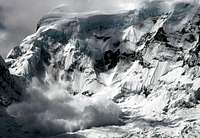
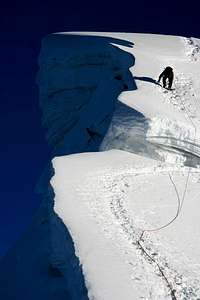


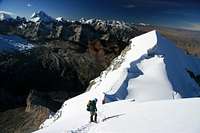




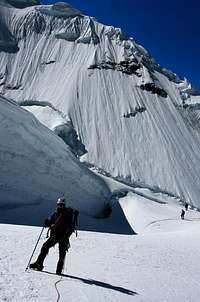

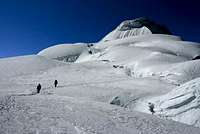

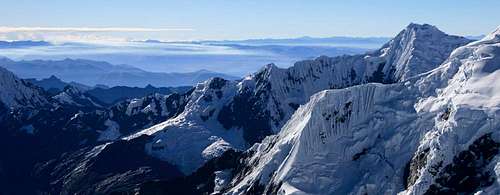





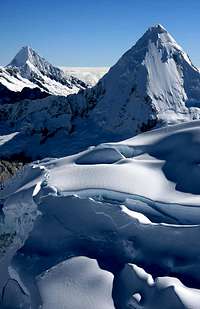




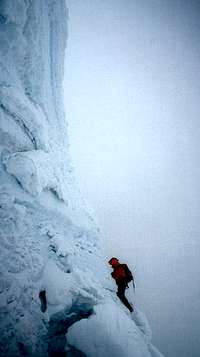
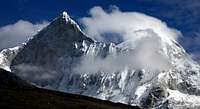
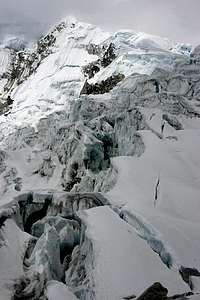
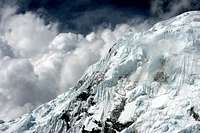
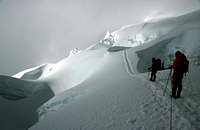

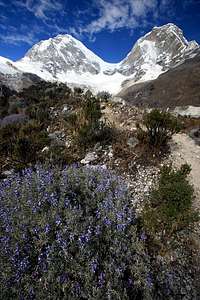
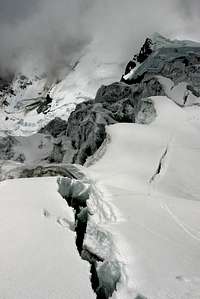



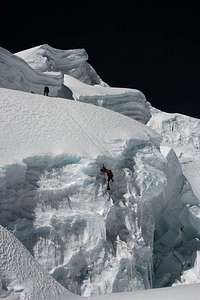


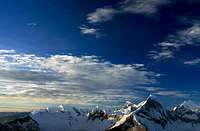

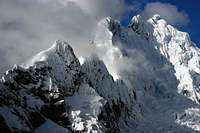

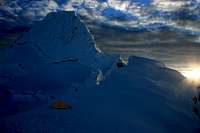



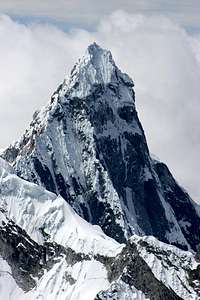
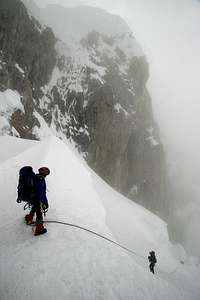











Comments
Post a Comment